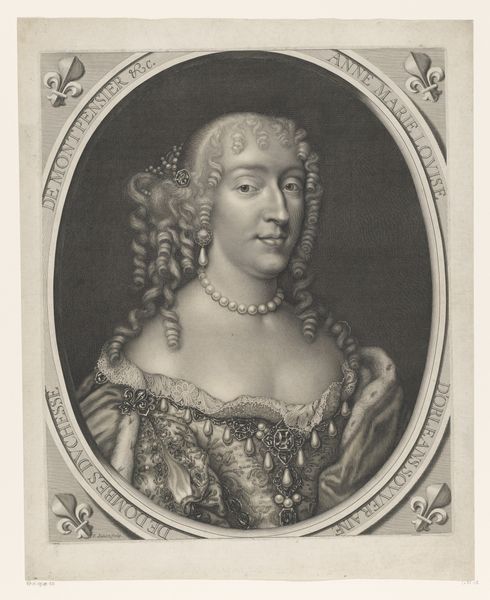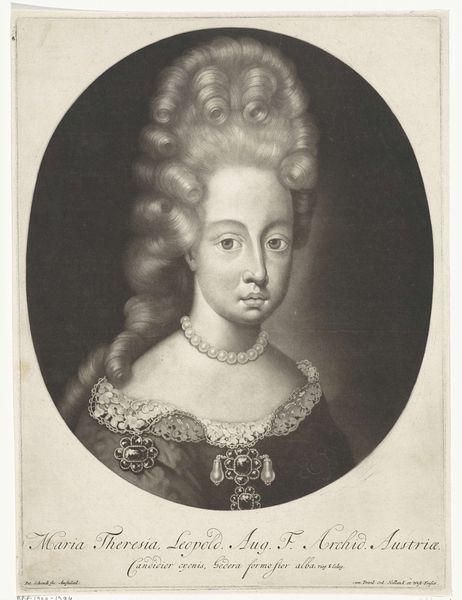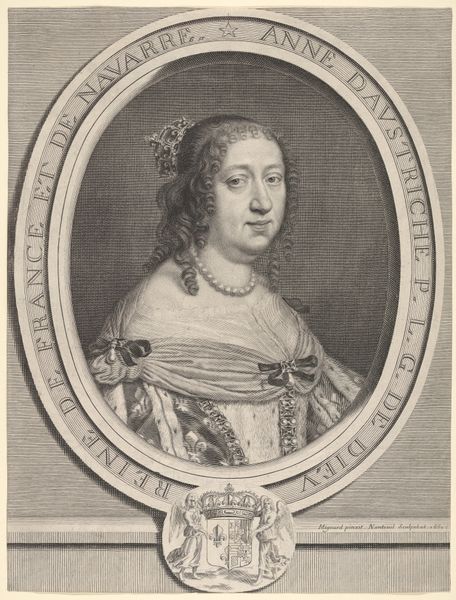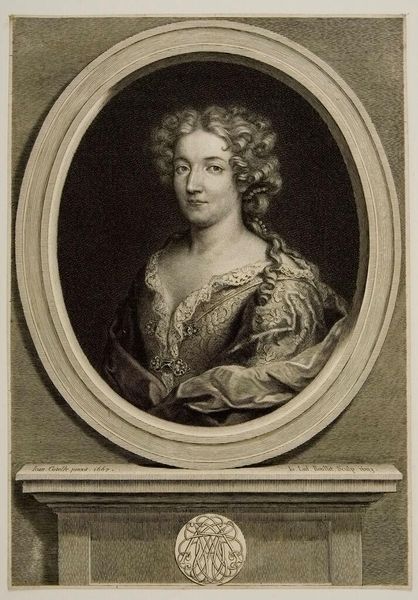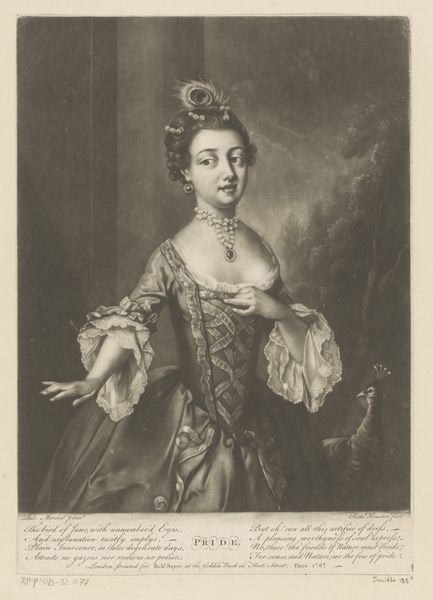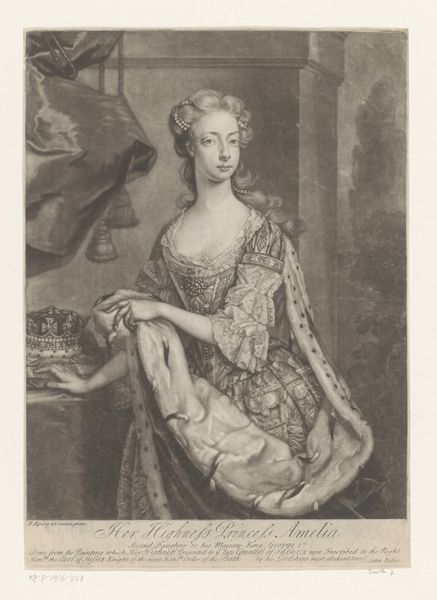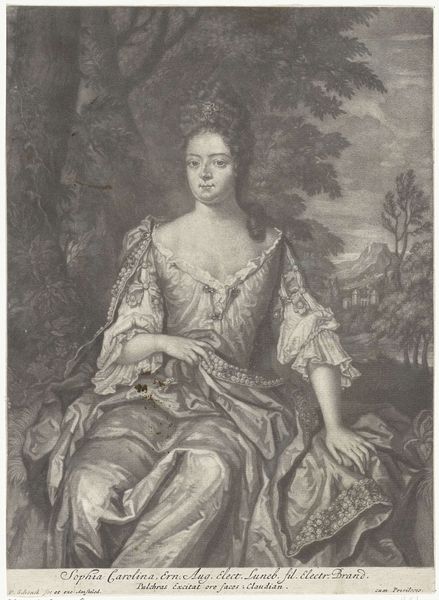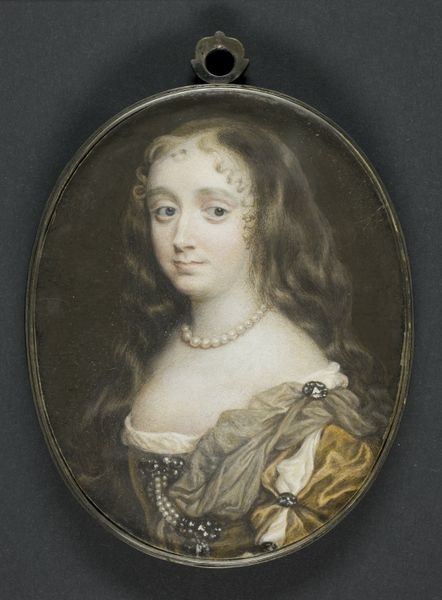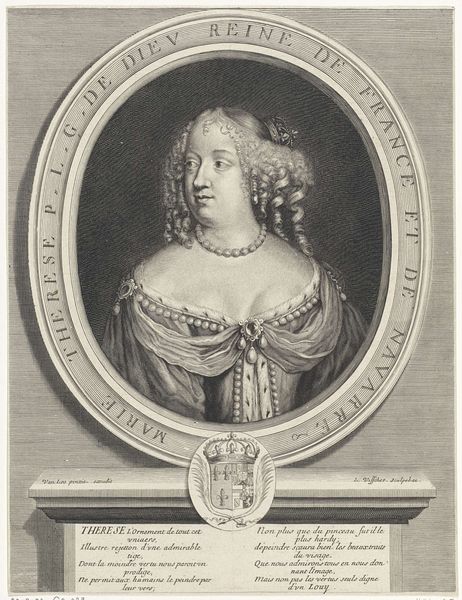
engraving
#
portrait
#
baroque
#
history-painting
#
engraving
Dimensions: height 488 mm, width 427 mm
Copyright: Rijks Museum: Open Domain
Antoine Masson made this print of Maria Anna Victoria of Bavaria using engraving, sometime in the late 17th century. It's a stunning display of the engraver’s skill. Masson expertly used metal tools to cut lines into a copper plate. These marks, holding ink, then transfer to paper, creating the image. Look closely and you can see the intricate network of lines that build up tone and texture. This wasn't just about technical skill, though. Engraving in this period was deeply connected to power and status. Prints like this helped to circulate images of the elite, reinforcing their authority and projecting an image of opulence. The sheer labor involved in creating such a detailed portrait further emphasized the wealth and privilege of the sitter. We see those qualities reflected back in the pearls, lace, and ermine, which would all have been produced by skilled labor. Think of the many hands involved, from the pearl divers, to the seamstresses, to the fur trappers. Ultimately, this print reminds us that even seemingly simple images are the product of complex social and economic systems. By recognizing these material connections, we gain a richer understanding of the artwork's place in history, and its continuing significance today.
Comments
No comments
Be the first to comment and join the conversation on the ultimate creative platform.

